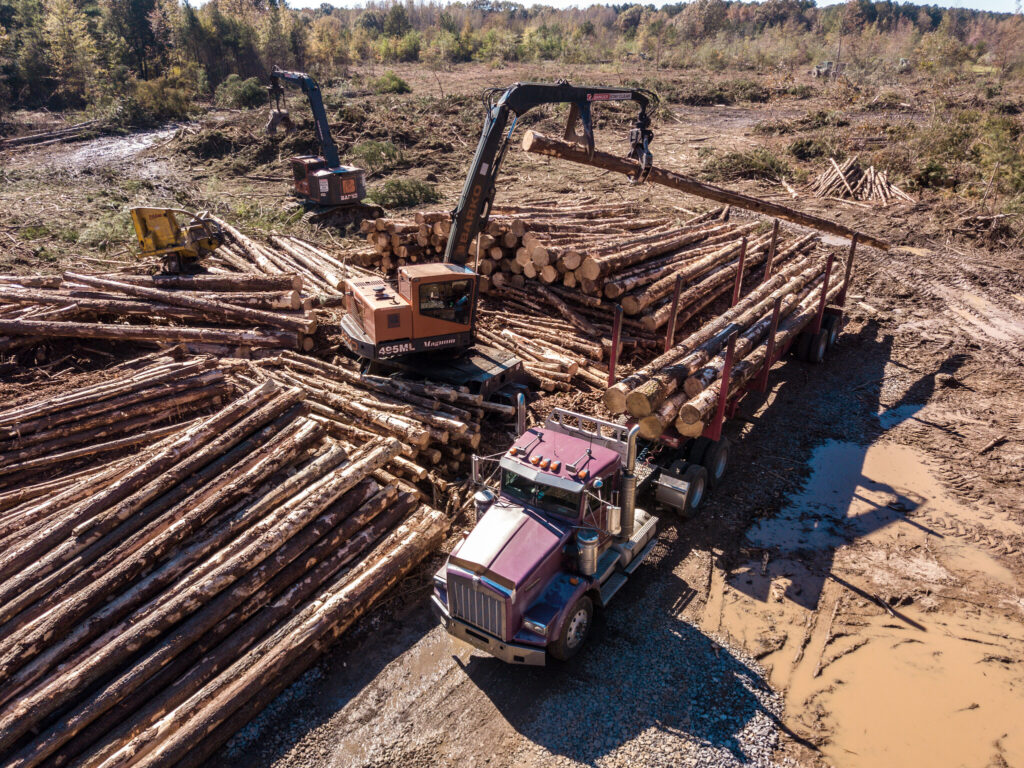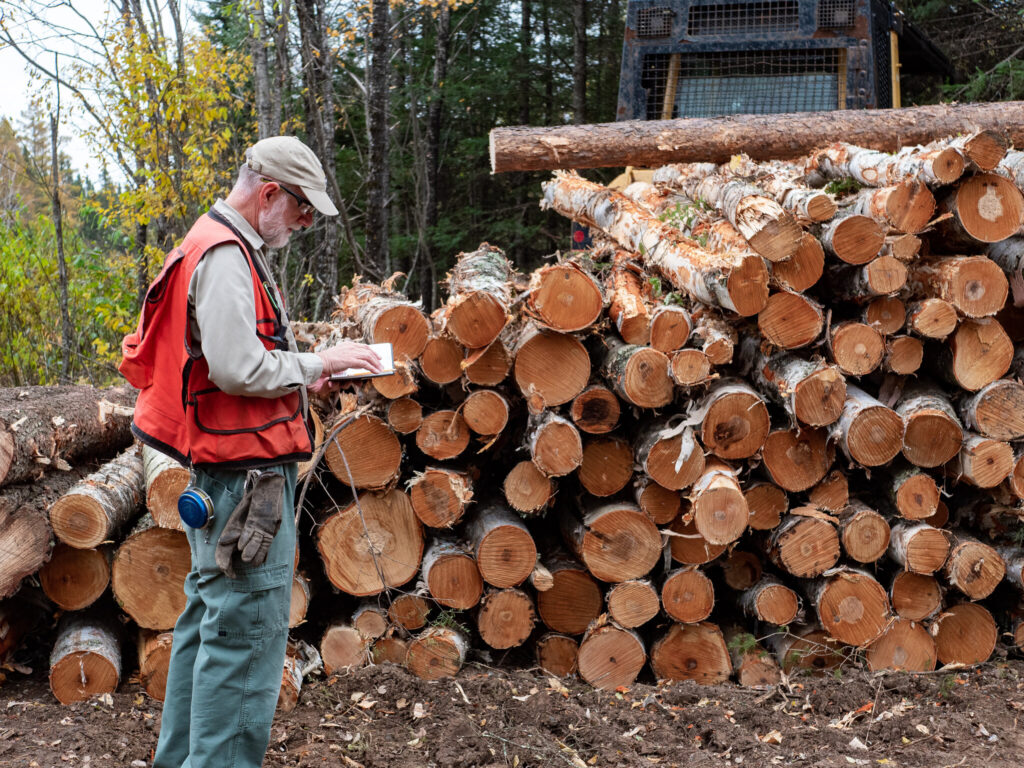By Tyler Hoguet and Whitney Forman-Cook | This blog is a cross-post and will appear in the Autumn 2020 edition of the National Woodlands Magazine.
The COVID-19 pandemic has produced the largest economic downturn in the United States since the Great Depression.
During the Great Recession of 2008, America’s real GDP declined by 8.4% during the second quarter of 2008.[1] A recent estimate by the Federal Reserve Bank of Atlanta projects that America’s GDP declined by 34.7% during the second quarter of 2020.[2] The impact of the current economic downturn is projected to linger long after the anticipated production of a COVID-19 vaccine: the Congressional Budget Office projected annual real GDP to be 3.4% lower between 2020 and 2030 than projected at the start of the year.[3]

Sharp declines in economic activity have particularly devastating impacts on state government budgets. Generally speaking, state governments run on consumption taxes (e.g. sales taxes), and therefore, will see sharper declines in revenue during a recession than federal or local governments will experience. During a recession, this decline in revenue coincides with an increase in mandatory spending on social safety nets, like Unemployment Insurance and Medicaid, producing massive budgetary shortfalls at the state level.
A recent estimate by the Center on Budget and Policy Priorities projects that state governments will face cumulative budget shortfalls totaling $555 billion between fiscal years (FY) 2020 – 2022.[4] During FY 2021 alone, states are expected to experience $290 billion in budget shortfalls (for reference, the highest single year budget shortfall following the 2008 Recession was $230 billion in 2010). As a result of current and anticipated budget cuts, states either furloughed or laid off 1.5 million workers between March and July 2020, roughly twice as many state furloughs and layoffs made during the entire Great Recession.[5]
These budget austerity measures are only beginning to hit state forestry agencies. For example, the Georgia Forestry Commission’s budget will be cut by nearly 9% in FY 2021.[6] Other state forestry agencies are facing budget cuts even more severe than Georgia’s. Such budget cuts could force agency-wide restructuring, reductions in staffing for foresters and wildland firefighters, strained field operation capacity, and reduced availability of heavy equipment necessary to fighting wildfires.

Amid the COVID-19 pandemic, an ailing national economy, and a substantial backlog in federal forest management and rural infrastructure maintenance, the nation’s state foresters have put forth a policy platform designed to bolster the forestry supply chain in the United States.
In an effort to head off state forestry budget cuts, the National Association of State Foresters released a COVID-19 Stimulus Platform which calls for an additional $500 million in support of state and private forestry.[7] Along with spending flexibility and reduced state matching requirements, the additional funding will grant state forestry agencies access to the resources they need to create new jobs, strengthen the forest products supply chain, and improve forest health, resilience, and productivity nationwide.
NASF’s stimulus platform also calls for creating a $2.5 billion loan program for contractors who harvested or delivered wood to mills in 2019 and extending a sustainable building tax credit to construction projects and the manufacturers of U.S. wood products used in these projects. The association continues to champion an increase in the government’s purchase of American wood products as a method for strengthening the entire forestry supply chain.
As America’s forest landowners know well, the forestry sector is foundational to rural economies and essential to the nation’s economic recovery. State forestry agencies are critical links in the forestry sector supply chain:
- State forestry agencies provide forestland owners with management advice and resources. Among other modes of assistance, state forestry agencies develop forest management plans for landowners to help them keep their forests providing private (and public!) benefits for the long run, including timber, recreation, and ecosystem services like improved water and air quality and wildlife habitat. These management plans help to keep forests intact, healthy, and more productive. In fact, forest owners with management plans are 2.7 times more likely to harvest timber.
- State forestry agencies are the leaders in setting, disseminating, and monitoring best management practices (BMPs) for protecting water quality during timber harvests and other forest management activities. State BMP programs are fundamental to meeting industry certification requirements and justifying the Clean Water Act permitting exemption for normal silvicultural activities.
- State forestry agencies help protect America’s forest resources from wildfire, pests, and disease. State forestry agencies train tens of thousands of wildland firefighters and employ aircraft and heavy equipment to provide wildfire protection on 1.5 billion acres, including 1.1 billion acres in state and private ownership. They also employ thousands of professional foresters and run dozens of forest health programs for monitoring, trapping, and eradicating native and invasive pests that kill trees.
- State forestry agencies actively manage state-owned forests and operate state tree nurseries. Over 75 million acres of state forests are managed for “multiple-use” – including timber production, recreation, and wildlife habitat – much like national forests are. Unlike some national forests, however, state forests are intensively managed and often healthier and of higher quality as a result. State forestry agencies also operate dozens of tree seedling nurseries, provide site preparation services, and manage tree planting crews nationwide.
Private forests – which receive more than 270,000 technical assists from state forestry agencies every year – are a tremendous economic engine for the U.S. These forests produce more than 90% of the nation’s wood and paper products, support 2.4 million jobs ($98.7 billion in payroll), contribute to $281 billion in timber sales, manufacturing, and shipments annually, and constitute 4.6% of the nation’s total manufacturing GDP.
The state of the national economy will be especially hard on state governments and state forestry agency budgets in the coming months and years. And without sustained, collaborative efforts to manage our forests across boundaries, our forestry supply chain will feel those impacts.
Budget cuts – particularly of 10% or more (which some forestry agencies are currently facing) – could also significantly hinder our collective ability to manage our nation’s forests because forest threats are shared across ownerships. If given the proper federal support, however, state forestry agencies have the potential to lead in the nation’s economic recovery by supporting private forestland owners and investing in forest health and productivity nationwide.
Have questions? Contact NASF Communications Director Whitney Forman-Cook.

